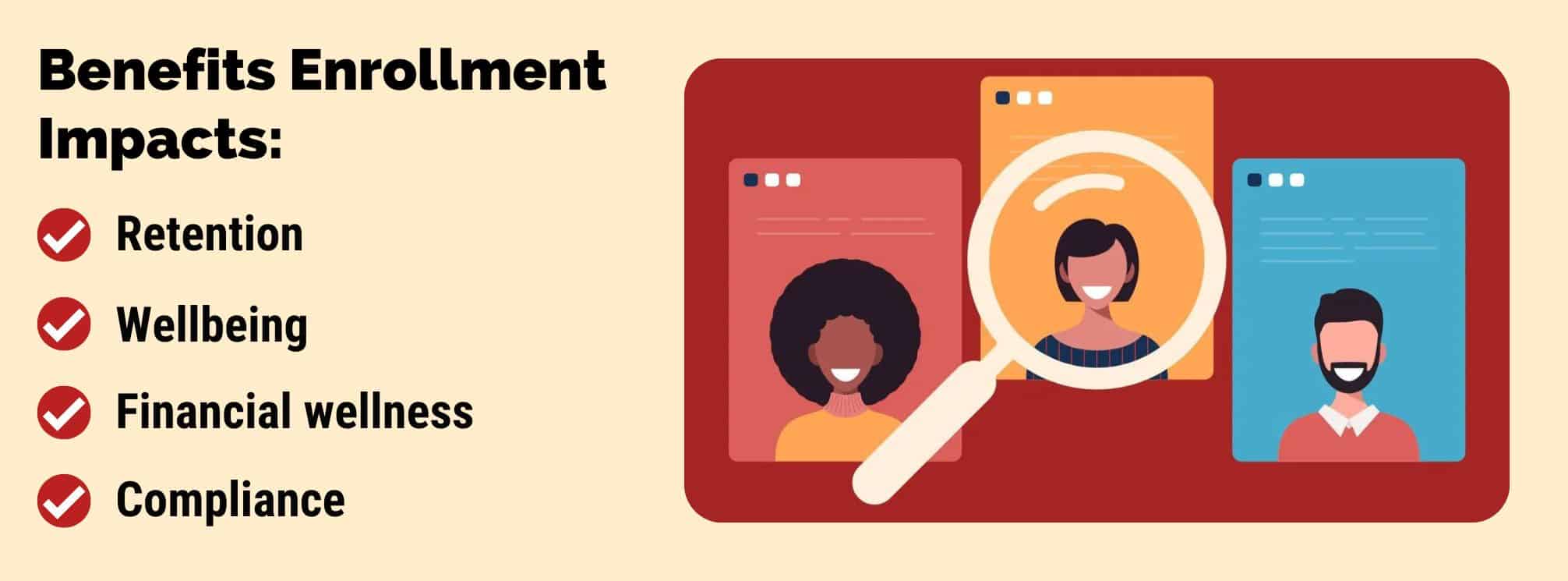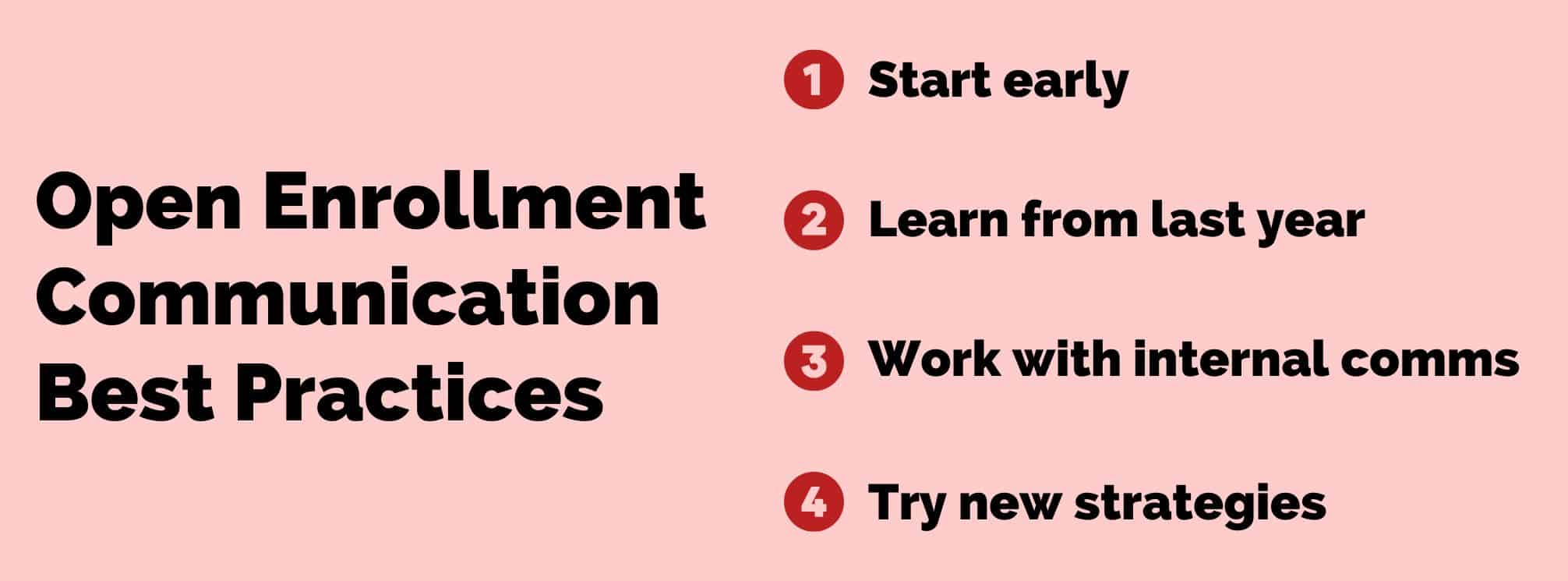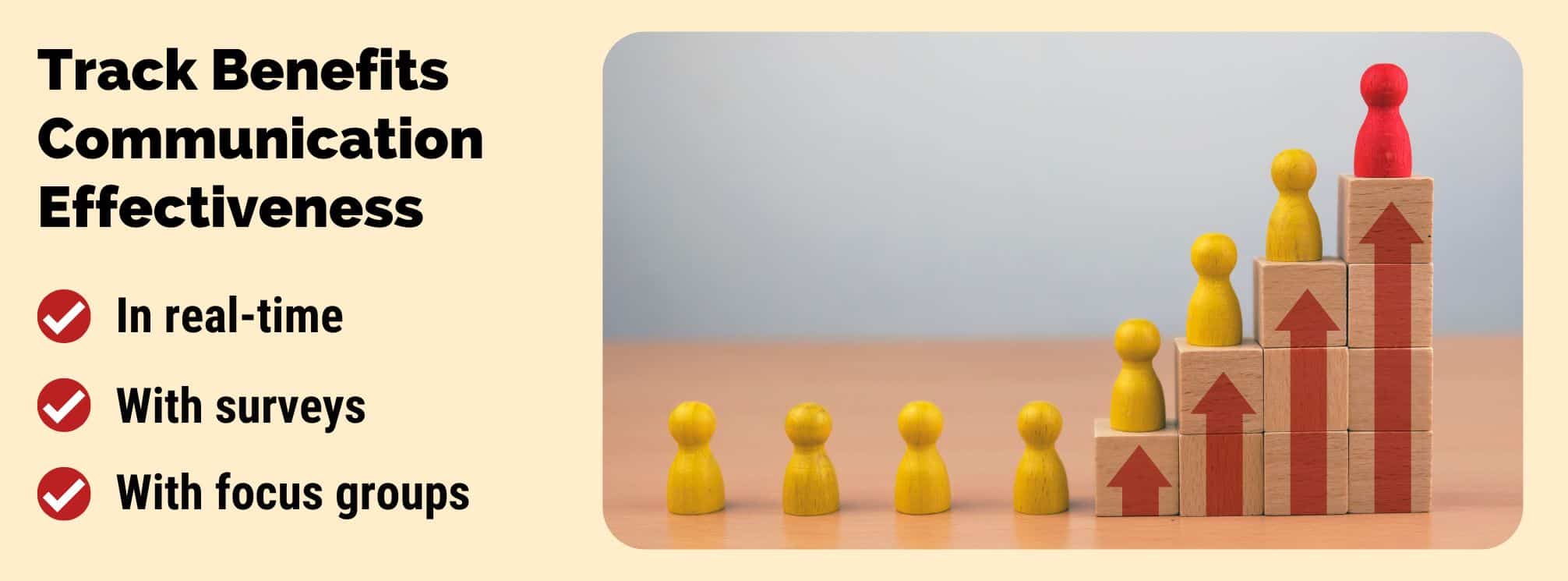Open Enrollment Communication Plan: How to Increase Benefits Enrollment
Even though benefits open enrollment happens annually, creating an effective open enrollment communication plan is still something that Human Resources and Internal Communications teams struggle with. But it’s critical to get right. The benefits we offer our teams are a critical factor in retaining them and helping them perform at their best. So, we’ll share what open enrollment is, how to communicate it, and why it matters.
What is Open Enrollment?
Open enrollment is the time each year when employees can enroll in, change, or confirm their benefits. During this period, employees typically select healthcare, dental, and vision plans for the following year. But employees may also select to enroll in 401k plans, if available.
Some companies offer additional benefits and perks, which they communicate about at the same time as employee open enrollment.
HR Open Enrollment Goals
During open enrollment, HR teams can have many different goals coming out of their enrollment communication campaign. These may include:
- Increasing enrollment in a certain benefit or type of plan
- Decreasing the number of late enrollment requests
- Reducing the number of individual inquiries and questions their team has to respond to
It’s up to HR and internal comms to partner so they can successfully communicate what employee benefits they offer, encourage on-time enrollment, and work towards achieving the overall goal of the program.

How Do You Create an Open Enrollment Communication Plan?
To create an internal communication campaign for open enrollment, follow these best practices and download our templates.
Open Enrollment Communication Planning Best Practices
- Start early. One of the best ways to set yourself up for success when communicating open enrollment is to give yourself enough time to plan. And we don’t mean just a few weeks early. Based on the size of your company and your goals, you may want to start planning open enrollment communications several months before the open enrollment window begins.
- Learn from last year. Using pre- and post-open enrollment surveys is a great way to learn where the bottlenecks are in your enrollment process. What channels were most effective at getting the word out? What questions did you not cover in enough detail? How might you improve your communications next year?
- Make it a team effort. HR and internal communications need to be strategic partners to effectively communicate critical initiatives like benefits, culture, and employee experience. If HR works on the open enrollment communication plan in a vacuum and shows it to IC last minute, you aren’t setting yourself up for success. The HR team is the expert in the benefits themselves, but internal comms are the experts in internal communication strategy. Not to mention, IC is aware of all the other initiatives taking place at the same time as open enrollment.
- Mix it up. One issue we see with OE campaigns is companies repeat the same tactics and strategy each year but expect different results. But it’s possible you need to diversify how you communicate about benefits (e.g. use more video). Or you might need to rethink what channels you are using to get the word out to your employees. Take risks, and try new tactics to see what is most effective with your audience segments.
How Can HR and Internal Comms Become Strategic Partners?
Human Resources needs to communicate many important things throughout the year. These include policies, ways of working/code of conduct, cybersecurity, benefits, and more. Despite the importance of these topics to a company’s success, they can be challenging to communicate. And that comes at a cost.
The ability to get messages through to all employees and focus on why they need to complete each of these tasks is even more complicated. Especially to your frontline teams who lack access to intranets or corporate email. So, where is the tipping point? The answer to this question is in the partnership between HR and Internal Communications.
The IC function has long been refining its comms approach, developing a calendar, and understanding the channel and timing of messages out to the workforce. Together, these teams need to develop a multi-touch and channel strategy, that includes mobile, to communicate these critical messages.
Here’s how:
- Meet regularly. Internal communications should host a biweekly or monthly meeting with all major stakeholders in the organization. HR needs to be one of them. And depending on how much communication HR needs to share with employees, you might even want a separate, dedicated meeting between HR and IC. By meeting regularly, you increase transparency between these two teams and align on goals.
- Take a metrics-focused approach. Another key to success is to not just let internal comms be the creator of communication but to become strategic partners. HR should share their business objectives with internal comms (e.g. retention goals, OE targets). By shifting into this mindset and focusing on the larger driving forces behind each campaign, internal comms will be better able to position each message and add value to the HR function.
Creating an Open Enrollment Communication Plan
Once you define SMART goals for open enrollment, you are ready to start planning the actual messages. To get started, we think it’s helpful to understand what the challenges or roadblocks are to employees enrolling on time or at all. In many cases, the main challenges are:
- Employees not understanding their benefits well enough
- Employees not spending enough time on enrollment (often due to not understanding them)
- Employees not having access to the same channels and, therefore, critical information
- Offering the wrong benefits to meet employee needs
These challenges can inform your strategy. You’ll need to take the following into account:
- We need to make sure we provide all employees with at least one primary channel for communication outside of face-to-face with a manager. And that channel needs to be accessible outside of the workplace. That’s important for open enrollment because most employees will enroll in their benefits outside of work. Maybe they need to review it with their spouse. Maybe the nature of their job prevents them from enrolling at work (e.g. they work in a hospital or a warehouse).
- We need to address questions upfront. This is where our surveys can help us hone in on the key questions we have to address in our communications.
- We need to diversify how we communicate open enrollment to improve understanding.
- We might need to find a way to give employees more time to enroll. If employees are spending minimal time enrolling in benefits due to a lack of understanding, this likely isn’t the issue. But if they are spending the minimum amount of time due to a lack of time, you may need to adjust.

Why Is It Important to Communicate Employee Benefits?
Employee benefits are a key tool for retention and a way to differentiate your company from the competition. In fact, 78% of employees say health benefits have an impact on whether or not they remain at their company.
So…why do we struggle so much with open enrollment communication? Only 19% of employees say they understand their benefits and 90% of the employees who don’t understand their benefits spend less than an hour on open enrollment.
Here’s why effectively communicating employee benefits, especially during open enrollment, is crucial:
- Retention. Offering competitive benefits sets your company apart from competitors. When employees feel valued and supported through attractive benefits packages, they are more likely to stay with the organization long-term.
- Higher employee well-being and satisfaction. Effective communication of employee benefits enhances overall employee well-being and job satisfaction. When employees fully understand their benefits, they can make informed decisions to meet their personal and family needs. This leads to increased satisfaction, reduced stress, and a sense of security, positively impacting their overall work performance and quality of life.
- Financial wellness. Many employee benefits, such as retirement plans, health savings accounts, or financial assistance programs, contribute to employees’ financial wellness. By clearly communicating these benefits, employees can make the most of their financial opportunities and plan for their future.
- Compliance and risk mitigation. Proper communication of benefits helps ensure legal compliance and mitigates potential risks. Open enrollment is a critical time to inform employees about regulatory requirements, policy updates, and any changes in benefit offerings. Transparent and clear communication avoids confusion, misunderstandings, and potential legal issues.
By prioritizing effective communication of employee benefits, particularly during open enrollment, companies can create a well-informed workforce that feels valued. Remember, open enrollment is not just a routine administrative process; it is an opportunity to educate and engage employees.

How Can You Measure Benefits Communication Effectiveness?
We think it’s important to measure the effectiveness of your open enrollment communication in real time and after the enrollment period ends.
Real-Time Monitoring
While your campaign is running, it’s important to continue checking your metrics to ensure you are staying on track. In addition to looking at open rates on messages and attendance rates at your training sessions, keep an eye on:
- The number of employees who have enrolled in benefits.
- The number of employees who have enrolled in your new benefit. If you find that the adoption of this benefit is low, you might decide to pull together a quick focus group with a sample of employees and get their thoughts or create a featured communication on that benefit.
- The number of one-off questions your team receives about open enrollment. Analyze whether these questions were answered in the materials you provided or not. If you think the answers were included, assess if you could make that clearer. PRO TIP: Track what the most commonly asked questions are throughout open enrollment to create FAQs in real-time and to inform your strategy for next year.
Post-Enrollment Measurement
For a campaign as big and important as open enrollment, you might find it useful to have a “post-mortem” with all stakeholders to review how it went. This can be included in your meeting to review the post-open enrollment survey results to cut down on the number of meetings you have to book. This review meeting should cover:
- If you met your primary objectives.
- If not, discuss what you think went wrong, using survey results to back up your hypotheses. You may also choose to do a focus group with employees to confirm theories and test solutions for next year.
- If you did meet your goals, still talk about what you think went right. This can be a great time to do a Stop, Start, Continue Analysis of your Open Enrollment Campaign.
- How each team feels about how the campaign went. Did you hit your goals but have a lot of sleepless nights and last-minute pivots? Or maybe one team feels like they put in way more effort than other stakeholders who could have been delegated to?
- What did employees have to say? Using anecdotal feedback, your survey results, and the questions the HR team received throughout the campaign, paint a picture of what the employee experience was like. Try to take this one step further and analyze how that experience differed for each of your employee groups.
- What is your action plan for next year? Instead of waiting a year to create your go-forward plan, start outlining it while it’s fresh. Do you feel like you need to push your start date back and give yourself more time? Are there other teams who should have been more involved earlier in the process? Determine what these major shifts are going to be ahead of time.
How Does theEMPLOYEEapp Help You Communicate Employee Benefits?
theEMPLOYEEapp is a great channel for communicating open enrollment. Here’s why:
- Because we have an employee app and an employee intranet, you can reach all employee segments on one platform.
- The app supports multimedia messages like podcasts, videos, PDFs, and PowerPoint decks. No matter how you are sharing benefits information, theEMPLOYEEapp is a great platform to do it.
- Our analytics help you track in real-time how different messages are performing and with what groups.
- Our folders are a document repository that employees can easily search to find important documents and information.
- Alerts help you remind employees about key deadlines and how they can get support with enrolling.
- Text notifications help you share reminders, important links, and updates to ensure more employees enroll on time.



